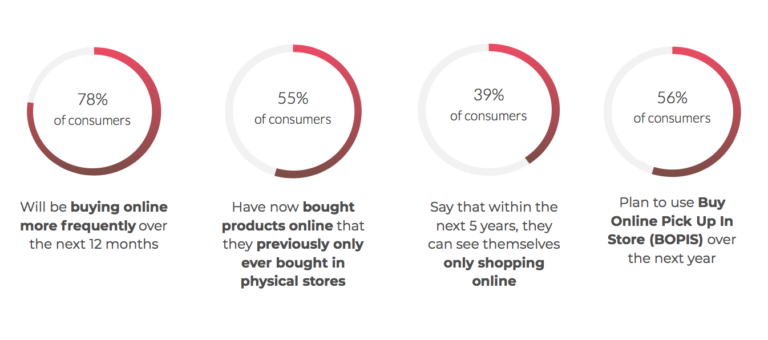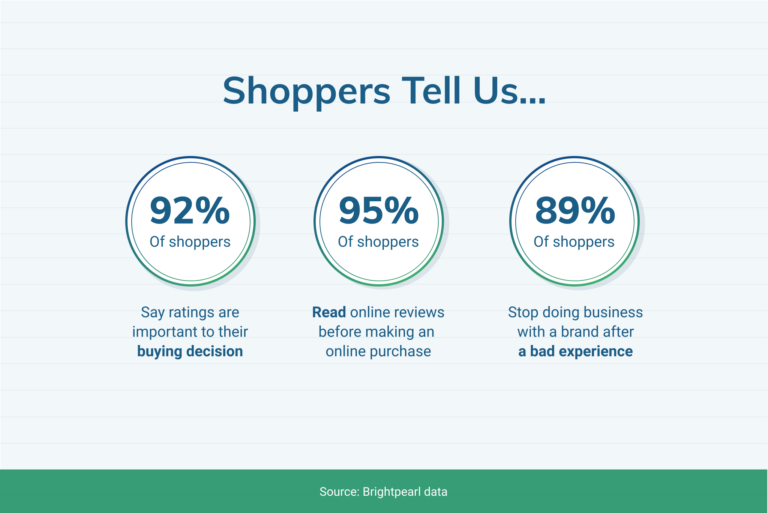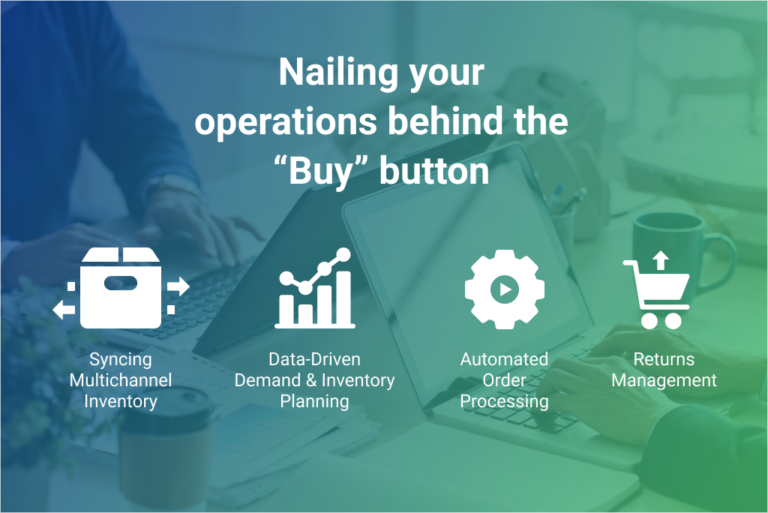Store owners keep their eyes peeled for the number of times someone hits the “Buy” button. But real challenges come after a sale is made.
Closing a sale doesn’t mean a happy ending. Brightpearl, the key player in digital operations, has elaborated on that in our new webinar!
Watch this video or read the article to learn about new consumer behaviour, how retail stores adapt to the new reality and why you’ll go a long way with ERP integration.
New Consumer Behaviour
The worldwide lockdown has changed things. Customers are exploring new ways of shopping. Instead of in-person purchases, they are finding new ways of buying goods.
COVID-19 has massively accelerated the growth of eCommerce and created a new type of consumer — a consumer merchants are forced to start adhering to. The new times call for revising fulfillment strategy, old ways of inventory management and back-office operations, overall.
Changes in Back-Office Operations
D2C
One area retailers have been focusing on is selling direct-to-consumer. This trend has seen a ton of growth even during the pre-pandemic times. But now that many retailers have been forced to close down their stores, this is a path that will only look more attractive to wholesalers. This changes the way you sell, as you need to run your warehouse, manage inventory, and change your overall strategy to make that shift.
New sales channels
The digital space has become overcrowded. With so many companies moving online, consumers have many options to choose from. That’s why the most successful brands strive to make their goods available across all sorts of platforms. This includes third-party websites like Amazon, eBay, and AliExpress. Additional sales channels pose a challenge in terms of inventory management. Overselling is in the card for merchants who need to keep their eyes on the ball and make their stock available across all selling platforms.
Consumer expectations
The pandemic has caused a shift in consumer expectations when it comes to fulfillment and flexible shipping experience. People are less inclined to go into stores so the new curbside trend is gaining momentum. The new research from Brightpearl says a quarter of retailers plan to add a curbside pickup option within the next 6 months. Offering new types of fulfillment alternatives is a great way of giving shoppers what they want and fit the bill during these times of uncertainty.
Returns management
An area of focus that can’t be overlooked by merchants is returns management. Consumers are buying more online than ever before. And that uptick in online shopping opens up a lot more opportunity for returns. As a way to manage that increase, brands are offering things like longer return windows, different options for shipping items back, and even free returns. And the goal is to provide the best shopping experience even for a customer returning your product. This is what makes it possible to capitalize on the long-term customer value, even if an item doesn’t work out.
Technology for back-office operations
Changing and implementing all back-office operations mentioned above takes new technology. Retailers are adding to their tech stack to better manage each of these processes. This is what lets them do their jobs better and with greater efficiency. And with so much growth happening in eCommerce, almost overnight, finding and implementing the right tech to support that growth will be critical to long-term success and survival.
Pressure on Merchants
Many newcomers are currently jumping into eCommerce without figuring out how they’ll maintain a healthy customer experience. So things are happening like orders are not being backed up, they’re running out of inventory and the return process is cumbersome or non-existent. As a result, customers are having bad experiences. Online consumers are being extremely vocal and unforgiving for those mistakes. So they leave bad reviews, which leaves some damaging consequences for merchants.
Customers have always been sparing no effort to leave bad reviews online. But reasons behind this pool of negative reviews have changed. The Brightpearl research found that 77% of poor reviews are directly related to issues shoppers have after clicking the “Buy” button. And that number excludes experiences when the product is broken or doesn’t perform as advertised. This underlines the importance of back-office operations and how they can help your business.
Why Go for ERP Integration?
Enterprise resource planning (or ERP) is a software application that connects business processes in one system. Essentially, it’s a tool that integrates into your eCommerce store and organizes all of your back-office operations. Let’s delve into the main benefits of using this technology.
Inventory management
Any inventory system helps to log and account for orders that come from everywhere you sell. By having these channels communicate with your back office, you’ll have much more accurate records of stock. Ultimately, you avoid things like overstocking and overselling, it prepares you for demand surges, and enables to quickly liquidate any low performing stock.
Inventory planning
Inventory management would be a lot easier if we could predict the future. But that “crystal ball” is not at our fingertips. Companies make decisions based on real data. ERP integration lets you analyze that data, understand demand for your products and how it fluctuates. That way, you can ensure to have the right stock on hand and optimize cash flow to spend money on the products that you know are going to sell.
Automated order processing
Processing orders is a critical part of back-office operations: the faster you process orders, the faster customers receive them and the happier they’ll be. But you don’t want to spend any of your resources on tasks that can be automated. Your team needs to work smarter, not harder. This can be achieved with ERP Integration: it automates orders coming in, follows the normal fulfillment process for ordinary orders, but then — separates the abnormal orders that require your attention.
Hassle-free return policy
Even with the most streamlined logistics and high-quality products, eCommerce stores will have to deal with returns. The odds are that the customer is already irritated, if your product is being returned. That’s why your responsibility is to minimize their stress and make the return process as hassle-free as possible. The ERP system integration lets you manage any stock of returning goods and automate the shipping process.
Brightpearl ERP
Thankfully for Magento store owners, Brightpearl provides all features out of the box. There is an extension for Magento 2, so you won’t have any trouble connecting your store with their ERP software.
After you have it installed and configured correctly, you will have access to the following features:
- Inventory management across different sales channels
- Orders management through all steps – picking, packing, and shipping
- Payments processing and management
- Prices management across all sales channels, including your Magento store
- Shipping methods management and status tracking
The success of any eCommerce store is often attributed to great marketing and sales. But the solid bedrock for a prosperous and thriving business is well behind the “Buy” button.
And it rests in back-office operations!







